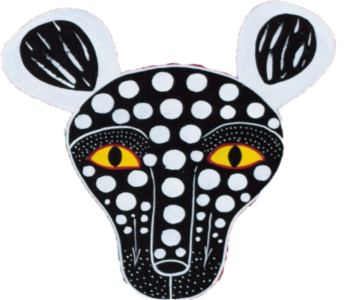January 09, 2022
Edward Saidi Tingatinga (1932-1972)
Edward Saidi Tingatinga was born in 1932 in Namochelia, now known as Mindu, Masasi, in the Mtwara region of southern Tanzania. Masasi is one of the six districts in Mtwara, alongside Nanyumbu, Tandahimba, Newala, Mtwara Rural, and Mtwara Municipality. This region is bordered by Mozambique to the south, Ruvuma to the west, Lindi to the north, and the Indian Ocean to the east.
Tingatinga's father was a farmer from the Ngindo ethnic group, and his mother was from the Makua ethnic group. He attended Mindu Mission School, where he completed Standard IV. Economic difficulties prevented him from continuing his education.
At the age of 25, in 1957, Tingatinga moved from his village to work as a sisal laborer in the Tanga region, located along the Indian Ocean. His relatives later joined him in Tanga. In 1960, Tingatinga relocated to Dar es Salaam, Tanzania's major commercial city.
The decline in sisal prices worldwide, due to the rise of synthetic fibers like nylon, led to the fall of many sisal estates. Tingatinga left his job in Tanga as a result. Upon arriving in Dar es Salaam, he was hosted by his cousin, Salum Musa (Mzee Lumumba), who worked as a cook for George Pollack at Msasani. Impressed by Tingatinga’s behavior, Pollack hired him as a gardener at his residence. After George Pollack left the country, Tingatinga and his cousin moved from Oysterbay to Msasani-Mikoroshoni, where Tingatinga began selling fruits to make a living.

Tingatinga began his artistic journey by crafting baskets and designing table mats and bed-sheet decorations in his free time. He experimented with transferring these designs onto hardboard using enamel paints, marking the start of his career in African painting.
In the late 1960s, Tingatinga invited his relatives to Dar es Salaam, where he began teaching them his painting techniques. This led to the formation of the first Tingatinga School of Painting, initially consisting of his immediate family.
Tingatinga, who married Agatha Mataka in 1970, was also involved in Makonde traditional dance and played the xylophone in his group. His involvement in the Tanzania African National Union (TANU) youth league, the political wing of the ruling party, led him to a job as a lab attendant at Muhimbili Medical Centre (now Muhimbili National Hospital). Despite his job, he dedicated his free time to painting at home. Agatha and his nephew, Omary Amonde, would take his paintings to Morogoro Stores Shopping Centre at Oysterbay, where they sold them to expatriates.
According to Mture (1998, p.31), Tingatinga’s fortunes improved significantly when he left his job at the medical center to paint full-time for the National Art Company, where he received better prices for his work. His introduction to the company came through a customer who appreciated his art.
Tragically, Tingatinga’s life was cut short in 1972 when he was mistakenly shot by police during a car chase. The incident, a case of mistaken identity, led to his death, which was reported the following day, shocking the nation.
Despite his untimely death, Tingatinga’s legacy lived on through his students. They continued to paint and sell their works at Morogoro Stores Shopping Centre. Among these students were Kasper Henrick Tedo, January John Linda, Adeus Mandu Mmatambwe, Abdallah Ajaba, and Simon George Mpata.
Initially, the school was exclusive to family members, but later, non-family members such as Mohamed Chalinda, the late Damian Msagula, and George Lilanga were admitted. Tingatinga’s youngest brother, George Simon Mpata, was reluctant to accept new students, believing their work diverged from Tingatinga’s original style. This disagreement led Mpata to move to Nairobi, Kenya, where he opened his own studio and continued painting in the Tingatinga style, challenging the group with his own interpretations.

Many of the new recruits were initially inspired by African nature and urban life. They benefited from training that introduced them to various artistic techniques, which sparked their creativity. According to an interview with Goscinny (2015), once trained in Tingatinga painting techniques, each student pursued their own unique inspirations.
In the beginning, these students lacked the proficiency to paint at the Tingatinga level and struggled to sell their artwork. Consequently, some of them chose to return to their villages and pursue farming instead. Those who remained continued painting but had to sell their work at minimal prices.
After enduring considerable hardship, Salum Musa (Mzee Lumumba) proposed the creation of a society to address their economic difficulties. The idea was embraced by the artists, and in 1989, they established the Tingatinga Partnership Society, named in honor of their painting style's founder. The society started with about 20 artists and was initially chaired by Omary Abdallah Amonde, with Saidi Chilamboni serving as deputy chairman (Mturi, 1998, p.33).
The society successfully secured a title deed for their workspace, which was originally under a bamboo tree. With the support of non-governmental organizations and art enthusiasts who donated funds, they were able to construct a permanent facility for their artistic endeavors. By 1990, the Tingatinga Partnership Society evolved into its current form.




